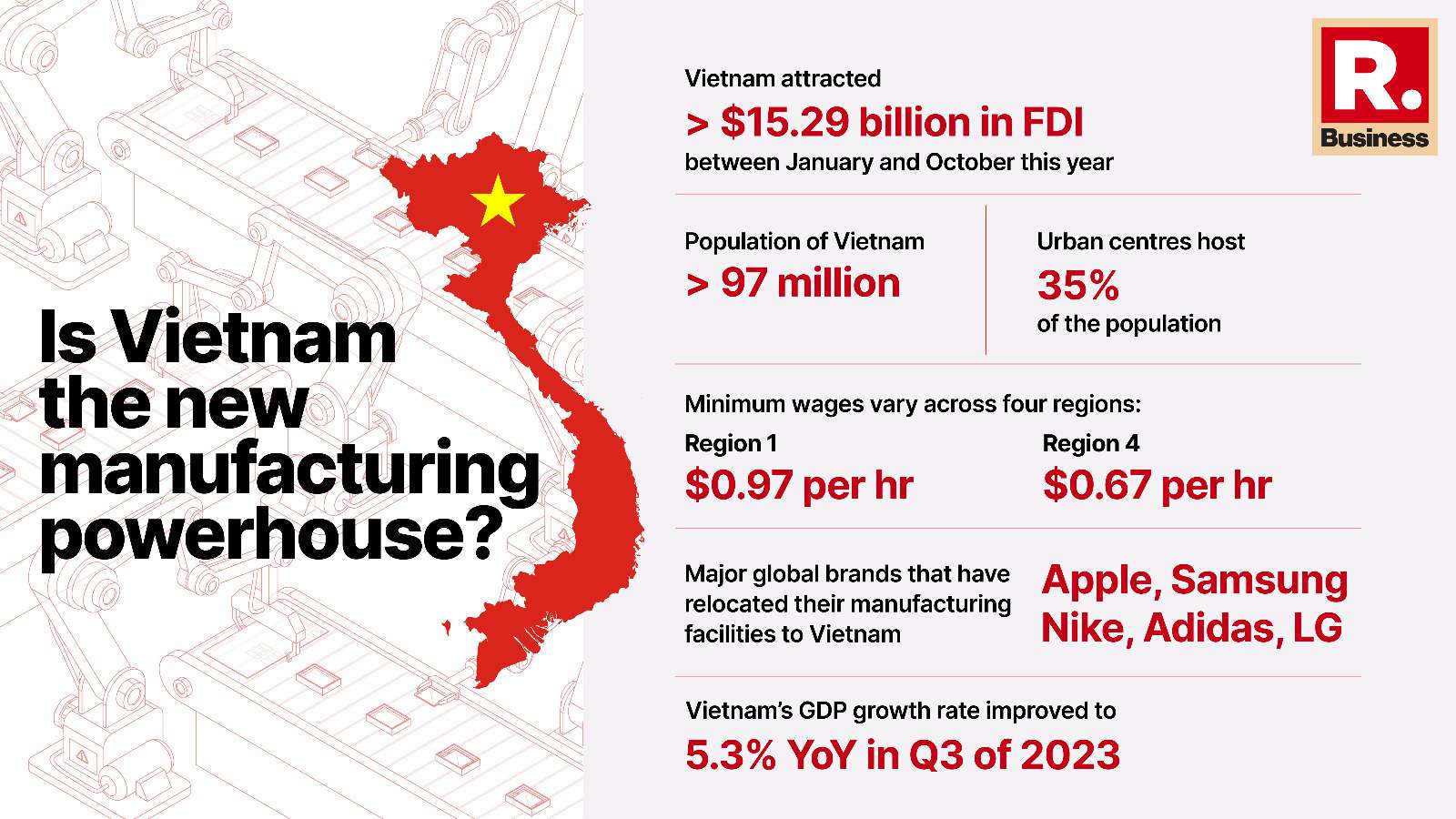Updated December 11th, 2023 at 15:20 IST
Move over China, Vietnam is the new favourite for manufacturers
Apple is working with China's BYD to move NPI resources to Vietnam, marking a major shift of manufacturing interest towards this Asian country.
Advertisement
Apple is working with China's BYD, a key iPad assembler, to move new product introduction (NPI) resources to Vietnam, marking a major shift of manufacturing interest towards this Asian country.

Vietnam has become a magnet for global manufacturing in recent years, with major corporations strategically shifting their production operations from China to this Southeast Asian nation. The trend is driven by several factors, making Vietnam an attractive destination for industries ranging from fashion and footwear to high-tech manufacturing.
Advertisement

Earlier today, Apple announced that it is allocating product development resources for the iPad to Vietnam, according to media reports. Apple is working with China's BYD, a key iPad assembler, to move new product introduction (NPI) resources to Vietnam. Apple suppliers including Luxshare and Foxconn also invested in the Vietnam country earlier this year to further diversify production away from China.
Labour availability and cost advantage
One of Vietnam's key attractions for global firms is its ample labour force, with a population of over 97 million (9.7 crore) people. The country's predominantly rural setting, where urban centres host only 35 per cent of the population, provides a diverse labour pool. Minimum wages vary across four regions, ranging from $0.67 per hour in region 4 to $0.97 per hour in region 1. This wage diversity allows companies to manage costs effectively.

Vietnam's southern provinces offer diversified labour pools compared to the north, making investments in services and various manufacturing sectors more appealing. As the country develops into a regional manufacturing hub, understanding regional variations in labour markets becomes crucial for companies seeking to optimise costs while maintaining productivity.
Advertisement
Regulatory environment and government initiatives
Navigating the regulatory environment is a challenge in any foreign market, and Vietnam is no exception. However, the Vietnamese government has shown commitment to improving its regulatory framework, aiming to enhance consistency in policies, financial transparency, and corporate disclosure standards. This proactive approach is aimed at attracting foreign investment and simplifying business operations.
Advertisement
By streamlining administrative procedures, permits, fees, and taxes, Vietnam is creating a more business-friendly environment. The government's efforts align with its goal of becoming a prominent regional manufacturing hub.
Top industries, global brands flocking to Vietnam
Vietnam has witnessed a surge in foreign direct investment (FDI), with manufacturing and processing leading the way. The country attracted over $15.29 billion in FDI between January and October this year. Its GDP has consistently grown at a rate of over 5 per cent.

Notably, major global brands such as Apple, Samsung, Nike, Adidas, and LG have relocated their manufacturing facilities to Vietnam.
Advertisement
The shift is evident in industries like fashion, footwear, furniture, garments, and electronics. Vietnam is on track to become a premier location for manufacturing, with prominent brands reducing their reliance on Chinese production facilities.
Should China worry?
From an economic and demographic perspective, Vietnam is unlikely to replace China's manufacturing dominance. Vietnam's labour force is only 7 per cent of China's, and while it attracts industries like electronics and textiles, it cannot match China's overall production capacity.
Despite challenges like the US-China trade war and the pandemic, China's supply chain and production capacity remain resilient. In the short term, China's share of global manufacturing appears unshakable.
Advertisement
Vietnam's rise as a manufacturing powerhouse is driven by a combination of factors, including labour cost advantages, a favourable business environment, and strategic shifts in global trade dynamics.
As companies continue to diversify their production bases, Vietnam is poised to play a pivotal role in the evolving landscape of global manufacturing.
Advertisement
Published December 8th, 2023 at 13:48 IST